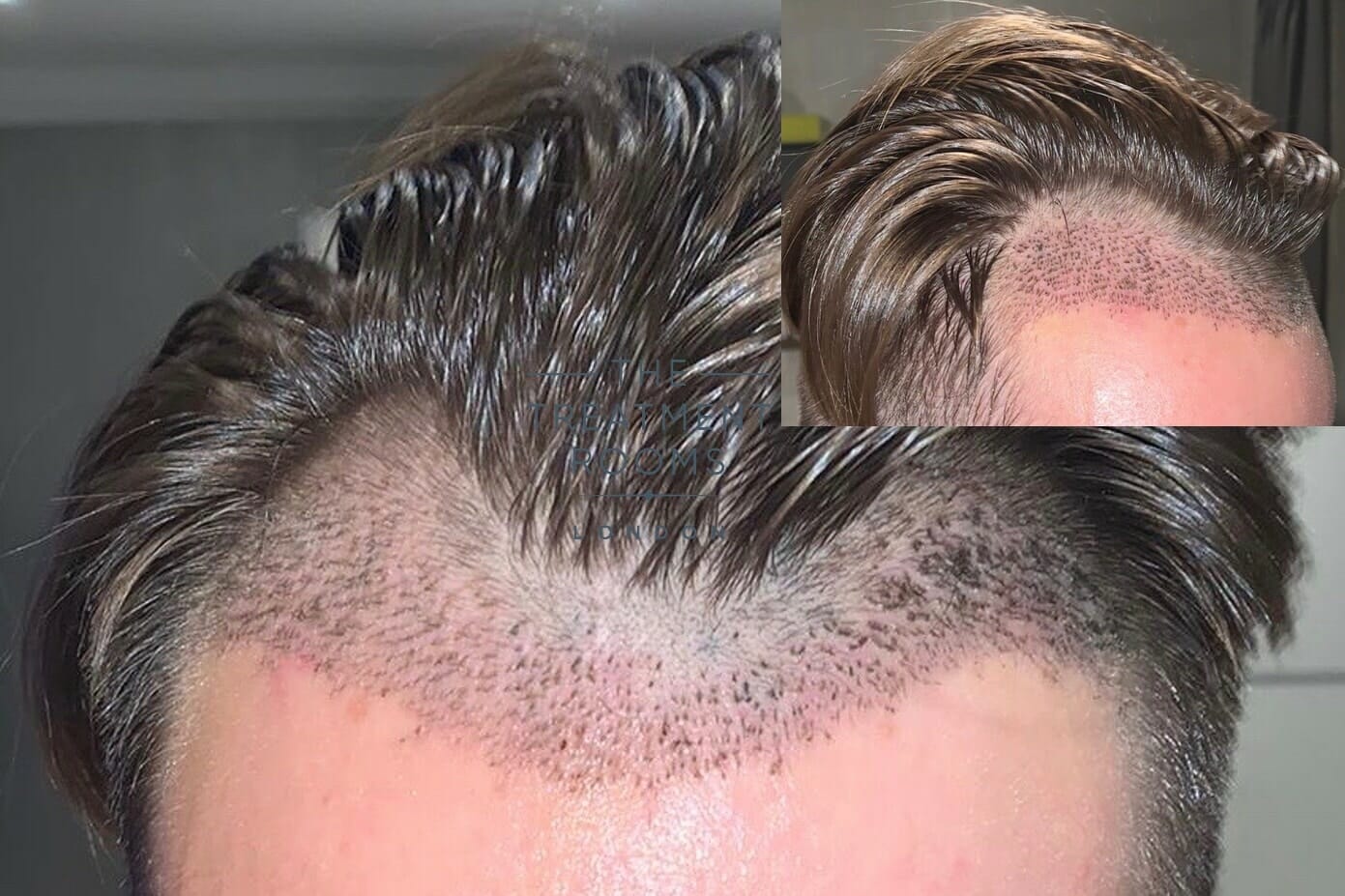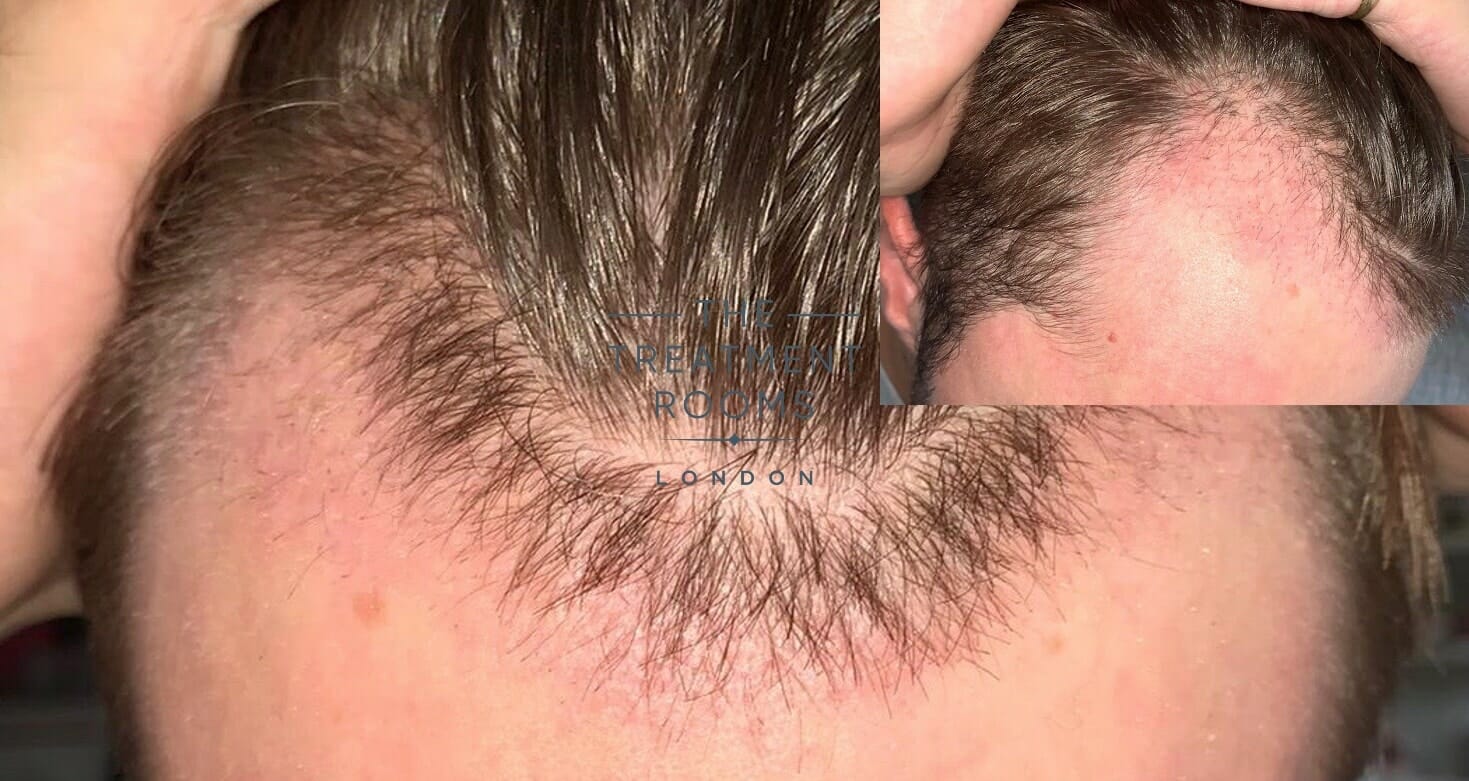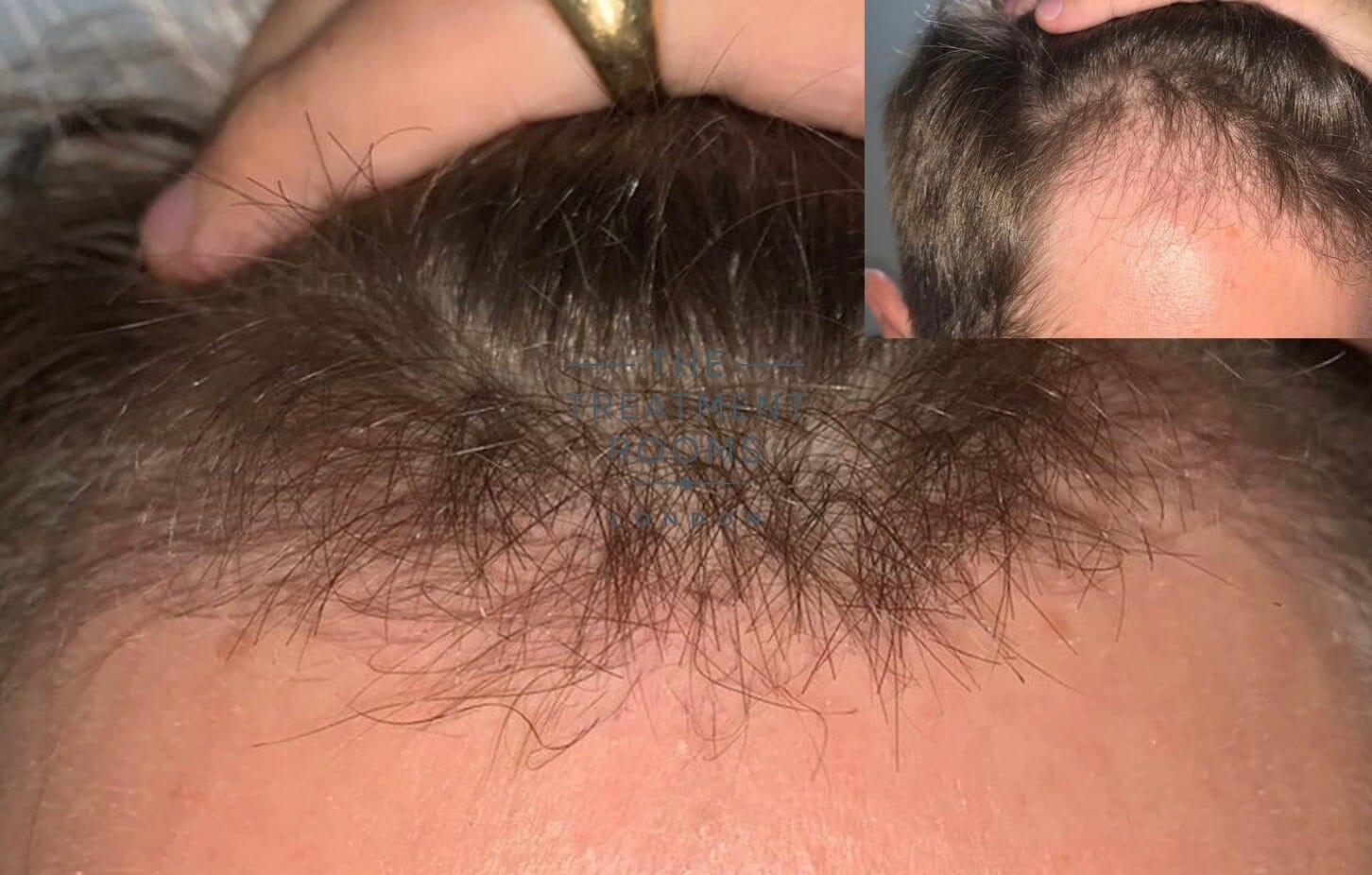Also known as "shock loss", it is normal to shed your transplanted hair following an FUE hair transplant. This process starts at 1-2 weeks after surgery and is completely normal. Your new hairs will grow in their place in the next 8-12 months.
There are 3 instances of hair shedding that patients need to know about:
- Hair shedding of transplanted hair
- Hair shedding of non-transplanted hair
- Hair shedding in the donor area
Why does hair shed after surgery?
Hairs have a growth cycle, split into 3 stages- growth, transition and resting phases. The resting phase is the time when the roots shed their hairs. Hairs can move into the resting phase following the trauma of surgery. The main traumatic events the hairs goes through during the course of hair transplant surgery are:
- The hair follicle being cut away and disconnected from blood supply
- The hair follicle being re-implanted back into the scalp
- Surrounding hairs being affected by incisions and anaesthetic
Hair shedding of transplanted hair

After a hair transplant, the implanted follicles and the attached hairs will stay in their new place for 1- 2 weeks. The follicles in this period will start to switch into a resting phase and will then begin to shed their hair. This shock loss can start as early as 10 days following transplantation. It can last up to 12 weeks.


This process of hair shedding is expected and does not represent the scalp "rejecting" the implanted hairs.

Hair shedding of non-transplanted hair
Some patients may notice that hairs that haven't been transplanted can shed after a hair transplant. The risk of shedding non-transplanted hairs is increased if someone has a large number of thin or miniaturised hairs that sit in-between newly implanted hairs. Like transplanted hairs, these native non-transplanted hairs shed because their follicles also move into a resting phase following the trauma of surgery.
Shock loss of non-transplanted hair can occur from 2 weeks following surgery but can also occur months later. This process, although rare, self-resolves. And all hair that has shed should regrow.
Hair shedding in the donor area
Rarely, patients can notice shock loss in the donor area. This phenomenon is rare especially when a patient has been operated on by an experienced hair transplant surgeon. Donor hair shedding is temporary and the hair should grow back.
When will hair grow back after shock loss?
Hair grafts tend to shed between 2-12 weeks following surgery. After they have shed, the hairs should start to grow back over the next 4-12 months.
From 12-18 months following surgery the hairs should start to thicken, making the end result even better. The above patient has now grown his hair following his shedding phase. His results are demonstrated below.

Can you reduce the risk of hair shedding after surgery?
Unfortunately, there is no proven way to reduce the risk of shock loss following surgery.
However, patients can safeguard against future loss by taking either Finasteride (men only) or Minoxidil (men and women).
Finasteride
Finasteride reduces the level of dihydrotestosterone in the scalp. This prevents hair loss and thickens hair in many men. Finasteride is a tablet you can take everyday or as advised by our Surgeons. You can read more about this medication here: Finasteride and Hair Transplant Surgery
Minoxidil
Minoxidil is a solution or a foam you can apply to thicken areas of thin hair. It also helps to prevent hair loss and can be used to help quicken the growth of hairs that have shed during shock loss. You can read more about this medication here: Minoxidil and Hair Transplant Surgery
Get in touch
If you'd like to find out more about the cost involved, take a look at our hair transplant cost page or try our hair graft calculator. If you are interested in speaking to one of our surgeons then get in touch, we're on hand to help.
Authored by
Reviewed by
FUE HAIR TRANSPLANT REVIEWS
Latest News
Complete Guide on Folic Acid and Hair Loss
July 9, 2025
Quick Summary Hair loss is a widespread concern that affects millions of people globally. While genetics, hormonal…
Does Hair Dye Cause Hair Thinning? Understanding the Risks and Facts
July 8, 2025
Have you noticed more hair loss after dyeing your hair? The ingredients in some dyes can be…
When Can You Safely Wear a Beanie After a Hair Transplant?
July 3, 2025
Quick Summary Cap Recommendations: Light, breathable caps, such as snapbacks or trucker hats, are advisable if you need…







